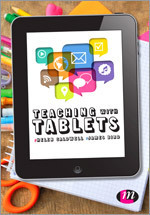Filters
Clear allSubject
- Careers (38) Apply Careers filter
- Climate Change (2) Apply Climate Change filter
- Creative arts and media (3) Apply Creative arts and media filter
- Cross curricular (19) Apply Cross curricular filter
- Design and technology (91) Apply Design and technology filter
- Engineering (74) Apply Engineering filter
- Leadership (1) Apply Leadership filter
- Mathematics (87) Apply Mathematics filter
- Personal development (3) Apply Personal development filter
- Psychology (1) Apply Psychology filter
- Science (99) Apply Science filter
- Space (1) Apply Space filter
- STEM Clubs (5) Apply STEM Clubs filter
Age range
Type
- Activity sheet (33) Apply Activity sheet filter
- Article (51) Apply Article filter
- Assessment (1) Apply Assessment filter
- Data set (1) Apply Data set filter
- Demonstration (2) Apply Demonstration filter
- Game (2) Apply Game filter
- Group work (3) Apply Group work filter
- Image (7) Apply Image filter
- Information sheet (12) Apply Information sheet filter
- Interactive resource (1) Apply Interactive resource filter
- Open-ended task (2) Apply Open-ended task filter
- Poster (3) Apply Poster filter
- Presentation (20) Apply Presentation filter
- Research (28) Apply Research filter
- Self assessment (1) Apply Self assessment filter
- Teacher guidance (120) Apply Teacher guidance filter
- Textbook (17) Apply Textbook filter
- Video (28) Apply Video filter
- (-) Remove Include Physical Resources filter Include Physical Resources
Showing 421 results
This document is a Computing at School community resource that covers the laws of Boolean algebra. It consists of a student worksheet and answer sheet. It is very suitable as a revision resource.
This document from the Department of Education looks at how Saint Benedict Academy supports pupils who persistently misbehave in their turnaround centre and deal with poor behaviour consistently. The resource explores the school's turnaround centre and it's 'C' system, as part of the managing behaviour and bullying...
This activity follows on from a previous graphics surface project. Previously a single graphics surface was created - this Python program uses multiple surfaces to build more complex graphics and to create effective animations.
Students are encouraged to experiment with the behaviour of the program, and to...
Using a set of simple ‘swap puzzles’, this CS4FN activity helps students to learn, fundamentally, what an algorithm is and how they can be made more efficient. Students are encouraged to create algorithms for solving the puzzles which can be used by future players to win, with no understanding of the game, in as...
To play a simple game called Hexapawn, an ‘artificially intelligent’ computer is created made entirely from sweets. The game is like a mini version of chess; the rules are explained fully, and a playing board drawn. The ‘machine’ then ‘learns’ how to improve its playing of the game by trial and error and by ‘...
The Computing at School newsletter is published three times a year. It is full of practical ideas for teachers of computing in primary and secondary schools, with articles contributed by a number of CAS members. With input from teachers, academics, advisors and industry professionals, it provides a varied source of...
This resource contains two sets of triominoes, based around the theme of internet security. A simple set with only 4 cards, where three definitions and their key words need to be matched. The set also has two extra definitions and key words to act as distractors from the actual answers, an extension might be to get...
This document from the Department of Education looks at how St Gregory's Catholic School Science College educates pupils and parents about cyberbullying through newsletters, their 'Parent Zone' and curriculum. The resource explores the school's resources for parents, mobile phone and behaviour polices as part of...
This item is one of over 25,000 physical resources available from the Resources Collection. The Archive Collection covers over 50 years of curriculum development in the STEM subjects. The Contemporary Collection includes the latest publications from UK educational publishers.
This item is one of over 25,000 physical resources available from the Resources Collection. The Archive Collection covers over 50 years of curriculum development in the STEM subjects. The Contemporary Collection includes the latest publications from UK educational publishers.
This is a very comprehensive package from Sean Cullinane which consists of lessons to teach the basics of object oriented programming. Students will produce a playable snake game as the outcome. Note: It is recommended that this is only delivered to students with some previous programming experience, ideally some...
Using analogies to teach the topic of the TCP/IP networking is often a very useful strategy. This Computing at School community resource consist of three documents. The first provides a theory overview of the communication process. The second provides a range of links and activities, although some are aimed at...

This book helps teachers to make the most of these devices in the primary classroom. It offers guidance on: how to use tablets to devise meaningful learning activities embed them in genuine curriculum contexts,...

This book can help students acquire a background and perspective on the technologies within which they eventually will live and work. This...
This CS4FN activity from the team at Queen Mary University of London highlights some issues encountered during the design of human-computer interfaces (HCI). It acts as an introduction to HCI, introducing the need to translate problems and to understand how people behave.
The activities include a robot...
